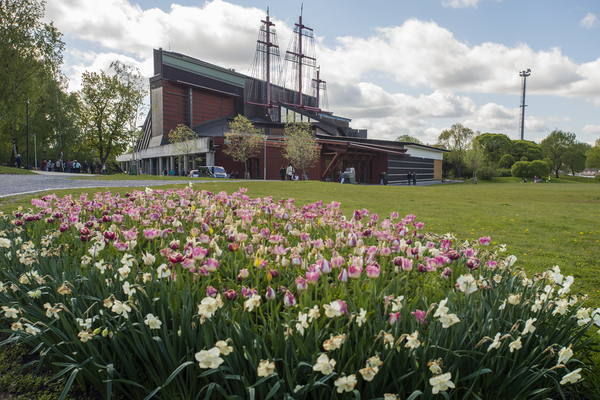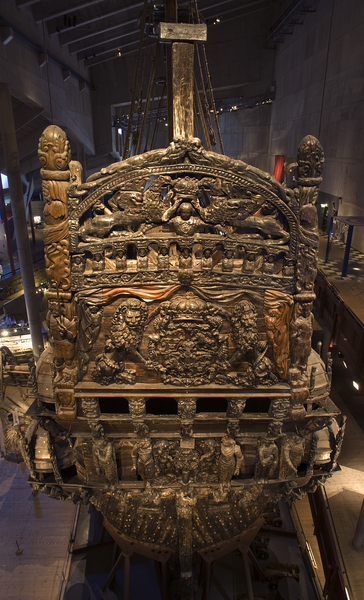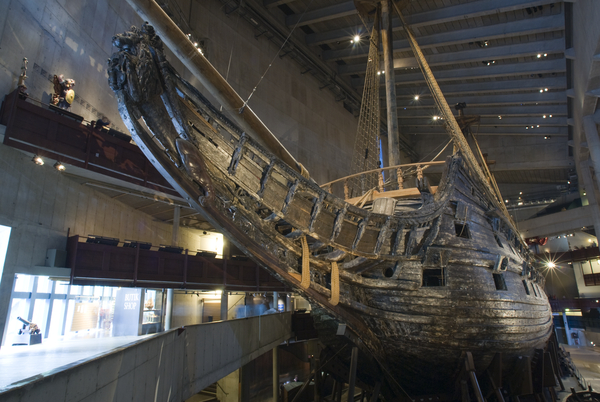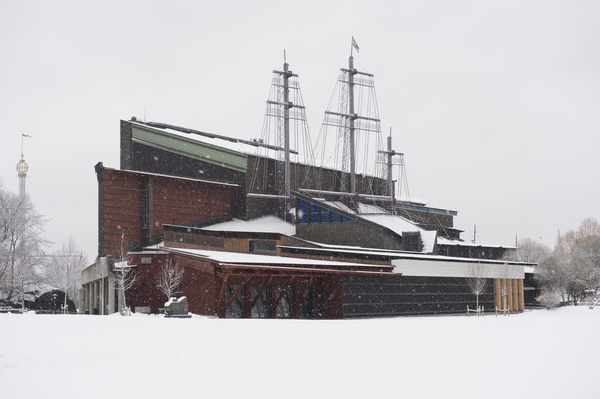Share to





Vasamuseet är ett av Skandinaviens mest välbesökta museer. Här finns det unikt välbevarade örlogsskeppet Vasa från 1628 i all sin prakt, utsmyckad med hundratals träskulpturer. Utställningarna i museet berättar om människorna ombord, det tidiga 1600-talets Sverige och hur skeppet återupptäcktes och bärgades efter 333 år på botten i Stockholms ström.
Om Vasamuseet | About the Vasa Museum
Efter att Vasa bärgades 1961 visades hon först på Wasavarvet, nära Liljevalchs konsthall på Djurgården i Stockholm. 1987 började ett nytt museum att byggas på Galärvarvet på Djurgården. 1990 invigdes Vasamuseet och det blev snart en av Sveriges kändaste byggnader.
När Vasa sjönk under sin jungfrufärd 1628 var det en händelse som många ville skulle falla i glömska så fort som möjligt. Idag, flera hundra år senare, är det felbyggda skeppet världsberömt. Vasa är en av svensk historias märkligaste framgångssagor.
På Vasamuseet pågår forskning som spänner över flera ämnesområden – om människorna ombord, kläderna de bar och livet de levde samt om själva bevarandet av skeppet och dess upphittade föremål.
Vasamuseet ingår i myndigheten Statens maritima och transporthistoriska museer tillsammans med Marinmuseum i Karlskrona, Sjöhistoriska museet och Vrak – Museum of Wrecks i Stockholm samt Järnvägsmuseet i Gävle.
Vasamuseet önskar att samlingarna används. Ladda gärna ner våra bilder och använd vidare. Varje bild har en licens som anger hur den får användas. Till bilden ska alltid upphovsperson (fotograf eller konstnär) och källa anges. Exempelvis: Fotograf: X X:sson, Vasamuseets samlingar.
På Statens maritima och transporthistoriska museer värnar vi om din personliga integritet. Besök myndighetens hemsida för att läsa om hur vi arbetar med hantering av personuppgifter.
The Vasa Museum is one of Scandinavia’s most visited museums. Here you will find the uniquely well-preserved warship Vasa from 1628 in all its glory, decorated with hundreds of wooden sculptures. The exhibitions in the museum tell the story of the people on board, early 17th-century Sweden and how the ship was rediscovered and salvaged after 333 years at the bottom of the sea.
At the Vasa Museum, research is conducted in areas that span several subjects – about the people on board, the clothes they wore and the life they lived, and about the preservation of the ship.
The Vasa Museum's collection includes more than 40,000 objects found in and around Vasa: Everything from sails and coins to cannons and textile. The objects provide a unique insight into everyday life at sea and on land, of naval combat and shipbuilding techniques in the early 1600s. You can search, read more about the objects and see pictures of a selection of objects from the Vasa Museum's collections.
The Vasa Museum welcomes the public to use our digital collections. Feel free to download our images and use further. Each image has a license that specifies how it can be used. The image must always include the author (photographer or artist) and source. Example: Photographer: X X, Vasamuseet's collections.
The Vasa Museum is part of the Swedish National Maritime and Transport Museums together with the Naval Museum in Karlskrona, the Maritime Museum and Vrak – Museum of Wrecks in Stockholm and the Railway Museum in Gävle.
